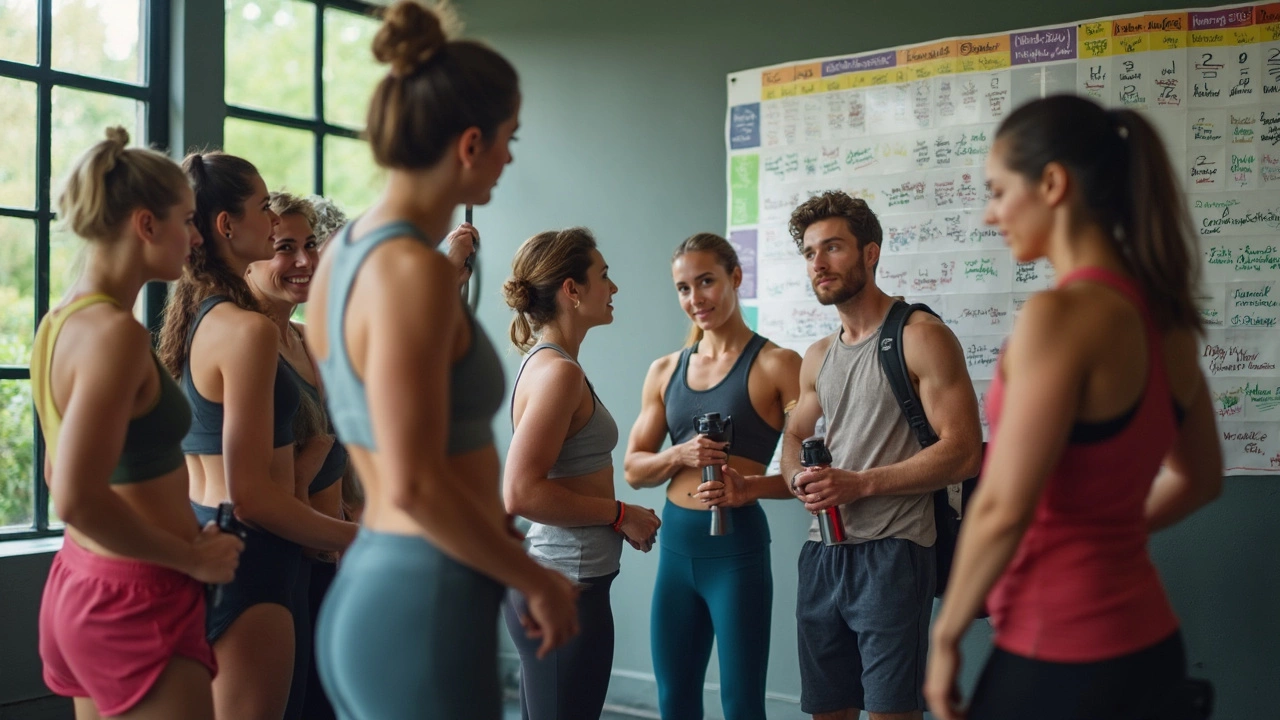Muscle Groups Explained – The Simple Way to Train Smarter
If you’ve ever felt stuck in your workouts, chances are you’re missing a key muscle group or doing too much of the same thing. Knowing which moves hit which muscles lets you plan sessions that actually improve strength, tone, and overall health. Below you’ll find a quick guide to the main muscle groups, the best exercises for each, and how to keep everything balanced.
Big muscle groups and the best moves
Chest (pectorals) – Push‑ups, bench press, and chest‑fly variations are the go‑to choices. If you’re at home, a sturdy chair for incline push‑ups works just as well.
Back (latissimus, rhomboids, traps) – Rows, pull‑ups, and reverse‑flyes target the back. A resistance band can replace a pull‑up bar for beginners.
Shoulders (deltoids) – Overhead presses, lateral raises, and front raises hit all three heads of the shoulder. Light dumbbells or even water bottles keep the movement safe.
Legs (quadriceps, hamstrings, glutes, calves) – Squats, lunges, deadlifts, and calf raises cover the lower body. Adding a jump squat or a short HIIT burst boosts power and burns extra calories.
Core (abs, obliques, lower back) – Planks, bicycle crunches, and super‑mans strengthen the whole torso. Yoga poses like boat and bridge also engage deep core muscles while improving flexibility.
For each group, aim for 2–4 sets of 8‑12 reps if you’re lifting weights. If you’re using bodyweight, adjust the reps so you can keep good form for the full set.
Balancing your routine and avoiding missed spots
Many beginners pick a “chest day” and ignore legs, which leads to strength imbalances and possible injury. A simple way to stay balanced is a full‑body split: work on two or three muscle groups per session, three times a week. Example: Monday – legs + core, Wednesday – back + shoulders, Friday – chest + core. This schedule gives each muscle at least 48 hours to recover.
If you prefer a split routine (e.g., “push/pull/legs”), make sure you rotate the order every few weeks so no group lags behind. Adding a yoga or stretching session once a week helps keep joints supple and reduces soreness.
Don’t forget cardio. While running, cycling, or HIIT doesn’t target a single muscle, it improves heart health and speeds up recovery. A 20‑minute HIIT circuit that includes jump lunges, burpees, and mountain climbers also fires the legs, core, and shoulders in one go.
Finally, track your progress. Write down the exercises, weight, and reps for each workout. When you see a plateau, switch the angle (e.g., incline bench instead of flat) or add a new movement (e.g., single‑leg deadlifts). Small changes keep muscles guessing and promote growth.
By matching exercises to the right muscle groups and keeping your routine balanced, you’ll notice stronger lifts, tighter tones, and fewer aches. Grab a notebook, pick a few of the moves above, and start hitting every major muscle this week. Your body will thank you.

What Parts of My Body Should I Workout Each Day? The Smart Guide
Maeve Larkspur May 14 0Struggling to figure out what part of your body to train each day? This guide lays out how to structure your workouts so you don’t burn out, skip vital muscle groups, or overtrain. Expect plain talk, practical schedules, and tips for balancing fitness with real life. You’ll get answers for beginners up to seasoned gym-goers. Get ready for a no-nonsense breakdown that fits your goals and lifestyle.
More Detail